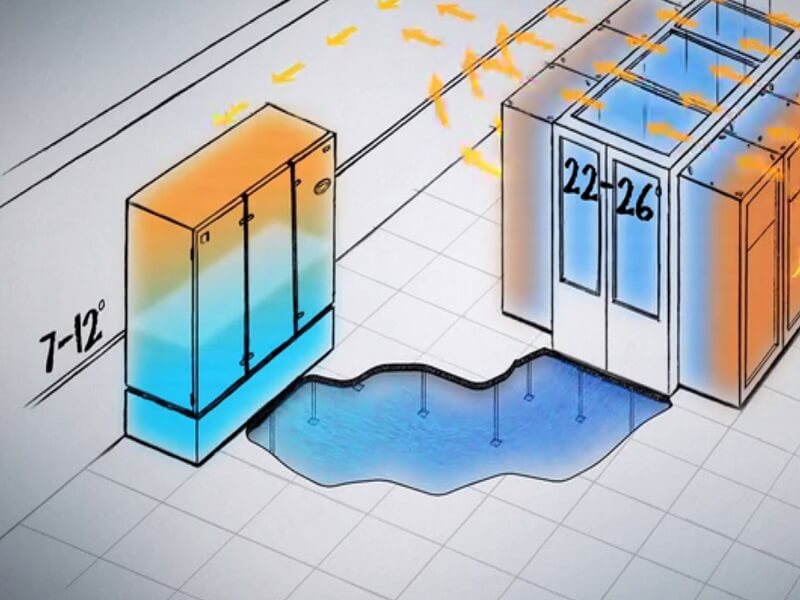Many European data center operators have made impressive strides around energy efficiency and carbon emission reduction in recent years.
But it’s probably fair to say that the part cooling refrigerants play in that process hasn’t attracted much industry-wide attention to date. However, that is likely to change through 2018 and beyond as recently introduced regulations present new opportunities for innovation.
Controls are being introduced around the world to reduce the use of some refrigerants due to their global warming potential (GWP). There is the prospect of bans on some new equipment in North America and Asia-Pacific in the next five to ten years but Europe is probably ahead of the curve in terms of enforcing specific regulation.
EU F-gas rules
The EU F-Gas Regulation came into force in 2015 and includes a ban on hydrofluorocarbons (HFCs) in new equipment for some specific use cases by 2025 (single split systems with less than 3kgs of refrigerant). The rules also aim to reduce HFC use in Europe by 79% by 2030 which will have a direct impact on the data center industry.
The regulation gradually imposes stricter quotas on the availability of key refrigerants – including those used in data center– with some of the biggest reductions coming in the last 12 months. For example, between 2017 and 2018 the quota was reduced from 93% of the original baseline to only 63%.
There are several HFC refrigerants used in data centers. Two of the most common are R134a – generally used in large systems – and R410A used in small and medium sized sites. The price of both is increasing.
The control on availability is driving up the prices but also encouraging equipment makers – including Vertiv - to innovate and develop new technologies and cooling strategies.
Alternative refrigerants: natural or man-made?
The obvious effect of the HFC regulations is to control their use but also promote the transition to alternatives. Some of these alternatives include more ‘natural’ refrigerants such as ammonia or propane. However, there is reason that these substances are not used widely already: flammability. Fire prevention is a key priority in any critical infrastructure environment and both ammonia and propane are highly flammable so widespread adoption is unlikely outside of very specific use cases. On the other side, the use of ammonia is also limited also due to its toxicity.
There are also a range of new man-made refrigerants – also known as fourth generation refrigerants - with lower GWP values and flammability than the natural alternatives. However, some are still in the development phase and for the short term at least are likely to be more expensive than the established compounds.
The leading contender as an alternative to the existing R134a refrigerant is known as R1234ze. It is a more volatile compound than R134a and as such breaks down in the atmosphere in a matter of weeks compared to ten years or more for R134a.
No short term fixes
However, none of these refrigerant alternatives could be described as an immediate ‘drop in’ replacement right now. They might have a lower GWP but a significant redesign of existing products would be required to provide an equal or higher cooling capacity and efficiency than systems based on existing refrigerants.
Chilled water and evaporative cooling
But while fourth-generation refrigerants will provide some options for operators who want to continue with existing cooling strategies based around DX, interest is naturally growing in technologies that use less refrigerants or in some cases none.
Chilled-water (CW) systems use refrigerants but as the chillers are located outside of the whitespace the fire risk from man-made refrigerants or some fourth-generation substances are less of an issue. As a result, although CW is regarded as a more traditional technology than DX in some regions there is the potential for more widespread adoption driven to some degree by the HFC regulations.
The use of indirect and in some cases direct evaporative air to air cooling technologies is also gathering pace. The operating efficiencies from using these systems means that interest has been growing in key territories – mostly northern Europe – for some time. However, the regulatory regime around HFC refrigerants could drive more operators to investigate these systems
Raising the operating temperature of data centers generally would also help to reduce the requirement for mechanical cooling but also promote the use of free cooling strategies.
Eco-design directive
Another complication, but also an opportunity, is that alongside the F-Gas regulations on refrigerants, separate regulation around energy efficiency have been introduced in the shape of the EU Eco-design directive. The directive aims to create consistent EU-wide rules for improving the environmental performance of products including air-conditioning and ventilation systems.
Next steps
So, to summarise, the impact of all of these changes will be to:
- to reduce the amount of refrigerant in direct expansion systems thanks to lower volumes and more efficient heat exchangers.
- to increase the operating temperature of the data center to reduce the need for mechanical cooling
- to promote chilled water systems with free-cooling and adiabatic options to reduce the total amount of mechanical cooling required
- to promote energy efficient cooling system design generally
New legislation has presented a real opportunity for continued innovation in data center cooling. Vertiv is tracking progress around refrigerant availability and emerging refrigerants as well as continuing to develop alternative designs to ensure customers have as wide a choice as possible when it comes to energy and cost-efficient cooling systems.





